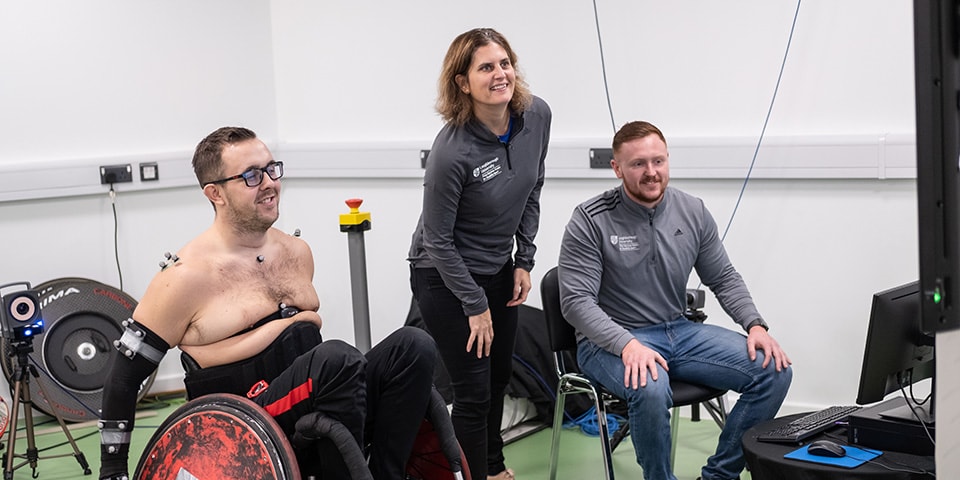Optimising Performance and Training Strategies
Projects in this theme are usually related to the Paralympic cycle
Research in Paralympic sport is limited and the documentation of effective training principles for the wheelchair athlete is still being developed. The projects within this theme aim to increase the knowledge about training and whether the guidelines from able-bodied participants can be applied in a wheelchair sports context. Current topics include:
- RPE - Rating of perceived exertion (RPE) scales provide a method of quantifying exercise/ training load, which can be extremely useful for individuals with a SCI. RPE can also be employed as a subjective method for self-regulating training intensity.
- Wheelchair tennis – Various anthropometric and physiological parameters are assessed in a laboratory and field-based environment to establish a database describing the key physiological aspects of wheelchair tennis performance.
- Player tracking – An accurate understanding of the demands of a sport, specific to individual athletes can be achieved through the use of GPS (global positioning satellite) systems in outdoor sports. Recently, technological innovations have seen the development of wireless systems for indoor use that can obtain information about players positioning, time and speeds. This will help plan individualised training programmes so that performance is optimised and injury risk is minimised in the lead up to Rio 2016.
- Thermoregulation - SCI athletes have an impaired thermoregulation, which can have a detrimental effect on performance. Any strategies that can reduce/ delay the increase in body and/or skin temperature during exercise, particularly in the heat, may enhance sporting performance. Effective cooling strategies will be paramount at the next Paralympics in Rio, 2016.
- Paratriathlon- Physiology of Paratriathlon.

Research Projects
- The use of ‘rating of perceived exertion (RPE)’ for monitoring training intensity in wheelchair athletes.
- Physiological demands of wheelchair tennis.
- A physiological and biomechanical comparison of wheelchair propulsion over-ground and on a new Wheelchair Ergometer.
- The physiological and biomechanical responses to wheelchair propulsion.
- The use of an indoor tracking system to explore the demands of wheelchair basketball and wheelchair rugby.
- Thermoregulation during intermittent sprint exercise in wheelchair rugby players.
- Pre- and intra cooling techniques in wheelchair rugby athletes.
- Relationship between core temperature and sleep habits in Spinal Cord Injury athletes.